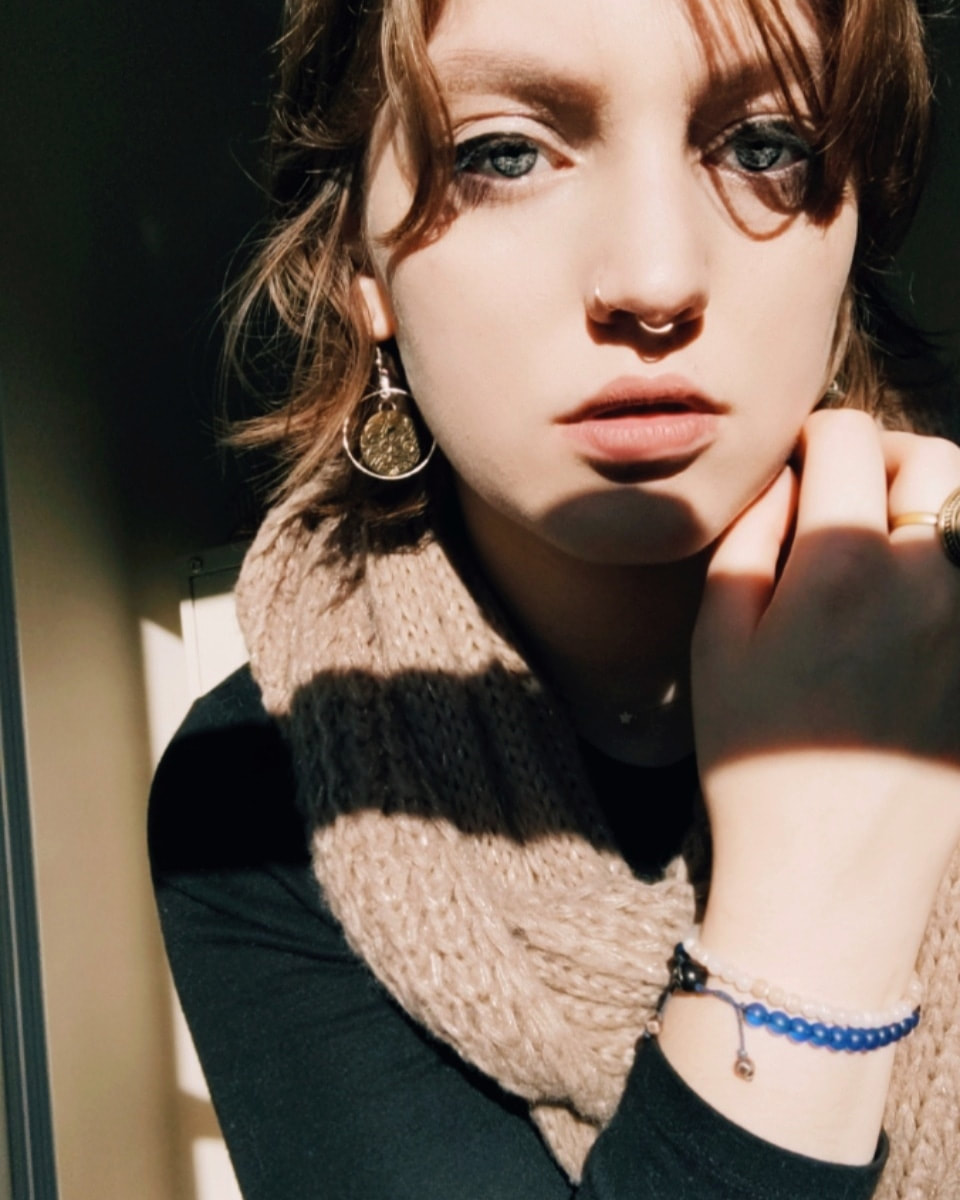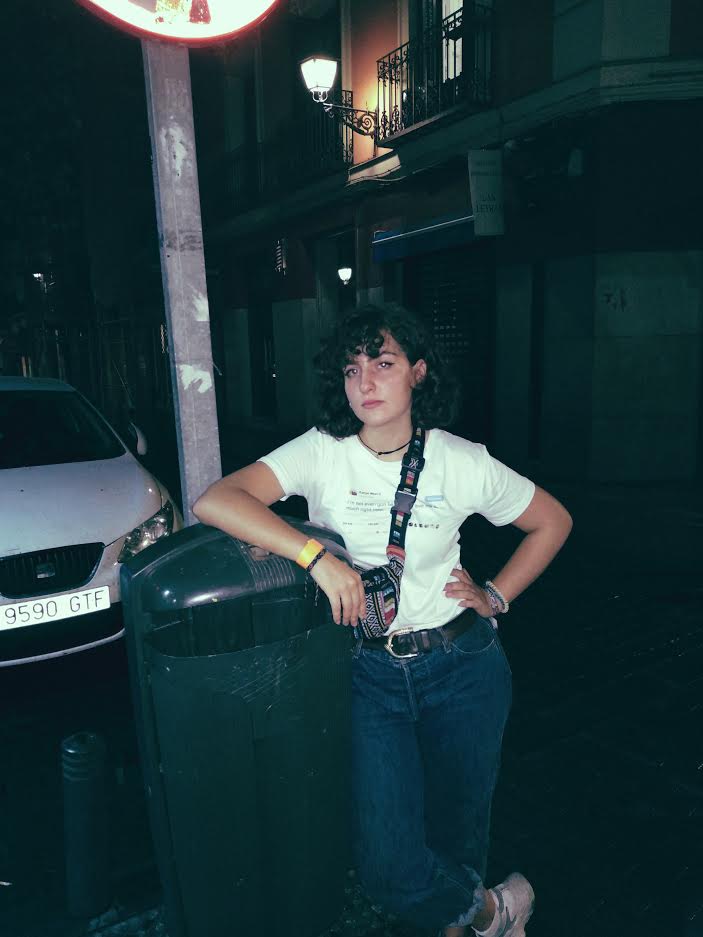|
The following poems refer to my life as a dancer. Martha Graham’s masterpiece, PRIMITIVE MYSTERIES, a dance in three sections, was the first piece I performed of Graham’s in 1964 which was a revival. The work debuted in 1931 and is based on an all female, Native American interpretation of the Crucifixion seen through the Virgin Mary’s eyes. This was the dance that placed Martha Graham on the innovator’s map with Pablo Picasso, Igor Stravinsky and Frank Lloyd Wright. PRIMITIVE MYSTERIES, I – HYMN TO THE VIRGINHELLO step-heel-toe, snap-other-foot-to-ankle in Martha Graham’s Primitive Mysteries, this solemn, ritual walk, its heel-pounding sound bracketing the entrances and exits in this three-part masterpiece. HELLO first section titled Hymn to the Virgin where we, the chorus, frame the Virgin Mary in primitive, stick figure friezes. Four of us hold Her as She splays against our string-taut bodies. Another four cradle-rock their arms to herald the Holy One within. HELLO to each frieze that effects a collective love song. THANK YOU Martha Graham onstage in twelve devotees following her like we follow the Virgin, circling our Mary in countless repetitions of step, step, turn, step, step, add a hiccup jump, accelerating to breakneck speed. Inside this rumpus Mary squats to birth the little one, her pose mirroring da Vinci’s Pieta. THANK YOU Mary who, in a billowing white gown, floats between an aisle of four kneeling dancers on either side. Our hands in prayer, She exchanges blessings with each acolyte in an arm reach soft as baby’s breath. THANK YOU Yuriko who plays Mary. When she blesses me, the last girl, our eyes embrace linking our souls; we are one. GOODBYE to dancers who starve to look like a long drink of water. We’re not the wide-hipped women on whom Martha created this dance in 1931 after she came back from the Southwest where she traveled with composer Louis Horst, to study movement and sound in Native American tribes on Guggenheim grants. GOODBYE months of work to bring life to this 1964 revival, months of prayer at the Temple of Ritual Walk to give step-heel-toe snap-other-foot-to-ankle more weight. GOODBYE to Martha’s hatred of revivals. Quoting Negro League pitcher, Satchel Paige, she’d declare, Never look back, they may be gaining on you. GOODBYE to dreams where I’m performing, wake drenched in anxiety, What’s next? GOODBYE to being drawn to the impossible; how desperate we are for the petroglyphic style to become skin; one girl snaps her meniscus. GOODBYE and THANK YOU for our after-performance satisfaction, a foot-stamping, standing ovation. PRIMITIVE MYSTERIES, II - CRUCIFIXUSHow the movement in Crucifixus purposefully imprisons our bodies. How we ten acolytes, in two groups of three and one of four dancers, trudge shoulder to shoulder along the floor as one grieving body. How our elbows touch each other in a V-shape, which Martha adds because we need to look more constrained. How my C-curved, hunched spine is nailed to its own cross. How I fear this is beyond what I can do. How during one rehearsal Martha shares, Christ asphyxiated on the cross, then later mutters, This is the cruelest dance I ever made. How Louis Horst’s mournful oboe score underlines human suffering. And how center stage, Mary inches forward, Her face a Noh mask, Her cupped hands below Her eyes to catch invisible tears. And how on either side of this tormented Mother, two dancers point to an imaginary cross; Look, look! their pointers seem to say but Her inward gaze remains. How Mary breaks through them, Her arms a cross piece, My son is dead. How we ten women circle our lost Mary in a marathon of fifty-eight leaps before we and the music stop, walk off stage in our solemn step-heel-toe, snap-other-foot to ankle while the audience has yet to breathe. PRIMITIVE MYSTERIES, III – HOSANNAAs if we corps of twelve women could not bear it any longer yet came back for more as if those blood-letting hours to get the Hosannas right-- leg raised, arms splayed as the cross piece simulating some barbaric rite to celebrate the rise of Mary’s dead son-- as our limbs break through to announce His resurrection, a brutal dance wrapped in arms in a cross, jumpjump over and over to convey a brimming joy in the Hosanna phrases while center stage Mary places her hand over an acolyte’s for support through her loss. At one point the dancer back bends into a hungry Mary’s arms as if She were laying to rest Her boy’s body, a goodbye for the many last times. We, the chorus, are the outside world immersed in His return while Mary transitions from pain to acceptance in Hosanna’s last Shiva-like image. With a dancer hidden behind the Virgin, we see four arms rising towards heaven to mark Her Son’s journey and release the sorrow within. We all breathe into this silent language of the soul and rise out of ourselves.
by a threadI go where I exist, to the dim sunken corner, your leg wedged between my two legs, single curtain to shut out the unwanted, lyrics white on black above the bed, and I don't think about the creepy man from the sandwich shop who likes how pudgy I am, and I don't think about the lamppost that flew through your window during the hurricane, and I only think off and on about our sicknesses, and I don't think about the sad words on the walls or that night the ambulance came or how I am always crawling into your lap in inappropriate places. It is four thirty in the afternoon, and I am late for living up to my last name. I have left the house to work out its own feelings, all terrible ones like anger and jealousy and disgust, and could it be that a nap with you will solve this monumental problem, thinks the busted adolescent brain. But I am so tired, and you are so, so tired that when my sister asks what's fun about going over to a friend's house just to sleep, I default to my classic response to questions from healthy people and stare at her in silence, hate pooling in my eyes. The world asks too much to demand I explain sadness too. hello doctor, my old friend I follow your legs up the stairs and talk to them about my feelings; this is always what I'm doing. They are flawless and hairless, and I can't stop staring. They seem to fall out of your black skirt announcing you – here I am, your savior, at least the one you hired this week. They keep interrupting my stories with questions about why I love them. And I tell them, I don’t know; why does anyone love anything? Maybe when they catch the light, they look like me, my legs, if I was living another life, your life, where I could be happy, no doubt, and not fall asleep tucked in question marks. Even though you are a presentation, never mind seeing beneath the surface. Not now. Playing dress-up is only the beginning of growing up, of the transformation. Can I imagine such a world, where eyes find themselves at my hemline and envy fogs away the self? love notes to self, despairing - VIIhi baby can you keep your eyes open you set your phone's alarm for half an hour later curl on the couch hold it in your hands pressed against your chest like a stuffed animal that sings and purrs out of nowhere and makes your ❤ pound so hard (and you can't remember if having a ❤ was like this before if this is just what a normal ❤ feels like) sweet❤ she has to cancel you say no problem fine whatever I'll therapist myself? surely I've clocked enough hours to get the job done check your phone and it (you) says calm down your life is not ruined calm down calm down calm down life is always a mess and loud and you can be such a good little self-soother when you bother to try right baby you slam your fist against anything not working keep hitting hard and the more you hit things the more you want to hit things things that would shatter things that would say stop you're ridiculous and well I'm a little worried about your ❤ with this have you been trying to-- hi baby you're not listening to a word I say are you Lauren Benderlives in Burlington, VT. Her work has appeared in IDK Magazine, The Collapsar, Gyroscope Review, Pittsburgh Poetry Review, Yes Poetry, and others. You can find her on twitter @benderpoet. 1Heart with two diamonds glued to their teeth. Heart in their bed, lilac blankets washed up on their legs like wave caps at sunset watering the flowers that someone left wilted on their skin. Heart drinking coffee, a drop of java cascading down their chin, so focused on lines of charcoal they don’t notice. They smudge the brown into the paper. Heart with me, they tell me about the ghosts that haunt their apartment and the woods that make them feel alive and how they have always been afraid of the dark. Freckles like fingerprints, they trace them like constellations, eyes closed tight when they reach each one and they tell me how much they wish they could kiss me. They don’t tell me why they can’t and I don’t ask. We just sit. Wishing. 2Empty the contents of your cannibal Heart. What do you see? A smile with two diamonds on teeth. Heart is lovely. I want to know them in the dark but their fear holds me back behind a gauzy veil. I think they are in another universe. I promise not to touch them, “it makes it worse,” they say. Instead, I lay in bed while they paint on my back, creating a galaxy. “Somewhere we could live,” they said. We are my favorite color palette. And I can feel them wishing on my stars with every pause their brush makes. 3There’s an artist named Valeska Soares who curates books with “love” in the
title spanning over several languages such as Italian, French, Spanish, and English. Soares researches the titles of these books and has them reprinted to match their first edition press with the cover color corresponding to the language they were originally printed in. These books are then displayed as a group of five hundred over four shelves, two hundred and fifty over two shelves, or one hundred and twenty-five on one shelf. Inside each book, the pages are blank. Home: questionI find myself in daily movement: in that second when the streetlamps are lit in that strange shiver before the plane takes off in the excitement of questions yet to be answered. I dread the will you stay with me because I do love you —I do I do I do-- but everything with roots dies and I do not want to die yet. It’s easier to write about these things in English because I cannot write about home without writing in Spanish. Not really. What’s in a language that when using one I can deny my homeland safely and when using another the words get stuck in my throat like hungry worms? The word for home in Spanish is hogar. In the dictionary, there’s six definitions for hogar:
a place to live family shelter coming together but but but home can also be a place where a fire is lit a bonfire. What does a paper girl do with a bonfire? Home: an answerThe truth about home is
that no matter where you are it never ceases to exist: it’s not a jail or a chain but a gravitational center to which one can always return. When you think about the bonfire think too about the background noise of the cafeteria at university and of the sky after class on winter evenings —sometimes like fresh spilled blood sometimes like a week-old bruise sometimes like a raw apricot. Think about the flower shop down the street: a splash of color so bright in the middle of the smoky asphalt streets of Madrid; think about the pine trees you get to see every weekend when you take the bus to go and hug him tight —and yes, everything smells like a bonfire there and there’s always some bird singing and there’s always someone clapping you in the back. Home does not exist to hold you back, but to hold you when you need it. |


